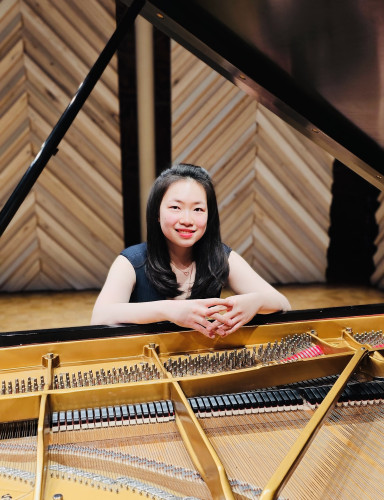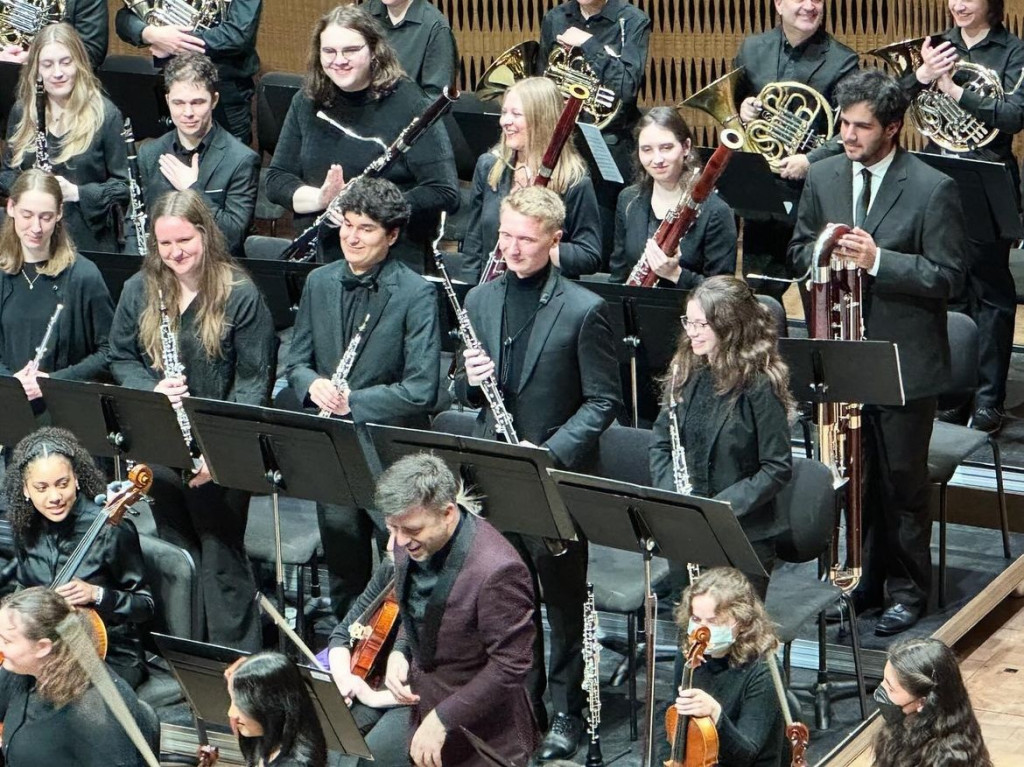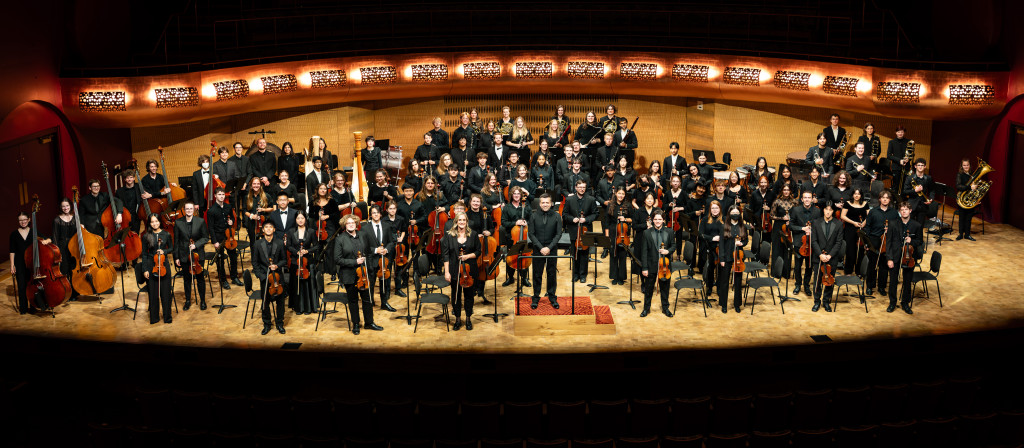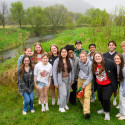These Badgers play classical music to tap creativity, teamwork

Presley Hansen’s favorite pieces to play on the bassoon include Carl Maria Von Weber’s Andante and Hungarian Rondo. Submitted photo
(Editor’s note: Serena Wang, a rising senior majoring in journalism who’s an intern for the Office of Strategic Communication, has played viola for 10 years and has performed with the University Symphony Orchestra and the Medical Sciences Orchestra.)
When she’s not working on her biomedical engineering coursework, University of Wisconsin–Madison junior Presley Hansen finds it refreshing to play bassoon in the UW Symphony Orchestra and in the Magnolia Quartet.
It allows her to tap into her creative side, balancing out the analytical work she does for engineering, she says. She makes sure to take at least 3 credits of music courses a semester.
“It’s a way for me to relax and take a brain break from the more STEM side of things,” Hansen says. “It’s a way for me to collaborate with a bunch of people in a way that I don’t usually get to and a way for me to expand my creative side because I don’t always get to do that.”
Classical music has been around for centuries, and it continues to thrive at UW–Madison, where music majors together with music aficionados from other majors study and perform classical music in various ensembles throughout the year.
“You get to see the music in a new light, because listening to it is completely different than playing it,” Hansen says.
UW’s School of Music was founded in 1895 and offers bachelor’s and master’s degrees in areas of study including voice, brass and conducting.
For some students, classical music offers a creative outlet that complements and balances their academic pursuits. Through solo performances, lessons and chamber groups, classical music offers students a way to develop discipline, collaborate with others and express themselves. Many people find classical music a refreshing break from their rigorous coursework and they enjoy sharing it with others.
“I think for music, you enjoy it yourself, and when you share it with others, they enjoy it also,” pianist Megan Angriawan says. “That’s why I love what I’m doing.”

One of Megan Angriawan’s favorite pieces to play on the piano is Franz Liszt’s Sonata in B minor.
Angriawan is pursuing a Doctoral of Musical Arts in piano performance and pedagogy degree. Growing up, Angrianwan learned both piano and violin and played both in ensembles during her undergraduate years. But now she’s mainly focused on piano performance and pedagogy, which is the study of teaching piano to others.
Classical music spans centuries, with thousands of composers who all have their own styles, from baroque to romantic to modern. This diversity and depth allow performers to explore different styles and perspectives while also adding their personal touches to the music.
“In the same way as reading a book or watching a movie, you’re getting to experience that world,” says Blake Curtis, a junior oboeist. “You read a book or watch a movie and there are so many different genes, people and worlds and when you play different pieces of music it is like interacting with the different composers and experiencing them.”

Blake Curtis — at center holding an oboe — plays with the UW Symphony Orchestra one of his favorite pieces — The Rite of Spring by Igor Stravinsky. Submitted photo
Curtis is a junior pursuing a bachelor of arts in music and psychology and has been playing the oboe since he was in the 4th grade. For Curtis, classical music isn’t going anywhere, but he thinks that many people don’t really know about it and haven’t had the chance to really experience it. Live performances, he says, are a great way for people to gain that exposure.
“The silence after you finish a piece before they start clapping is probably one of my favorite parts of performing live,” Curtis says. “There is nothing quite like it.”
How to get started in classical music
If you want to start listening to classical music, one way is to listen to movie scores or video game soundtracks, as many of them are recorded by orchestras and contain similar elements to many classical music pieces. There are also concerts where the symphony will play the soundtrack live as the movie is playing. If you can go, see a performance live you go because hearing a piece live is very different that listening to a recording. In general, start with pieces and composers that you know and go on from there.
Here are some recommendations for pieces to listen to:
- Bach – Cello Suites, The Well-Tempered Clavier
- Beethoven – Symphony No. 5
- Bernstein – Symphonic Dances from West Side Story
- Borodin – Polovtsian Dances
- Brahms – Academic Festival Overture
- Chopin – Preludes and Etudes (Etude Op.10 No. 4), Nocturnes
- Debussy – Claire De Lune, La Mer
- Dvorak – String Quartets (No. 12 “American”)
- Gershwin – Rhapsody in Blue
- Holst – The Planets
- Mozart – Papageno’s Aria from the Magic Flute
- Prokofiev – Piano Concertos
- Rachmaninoff – Piano Concerto 2
- Tchaikovsky – 1812 Overture, Piano Concerto 1

The University Symphony Orchestra.




